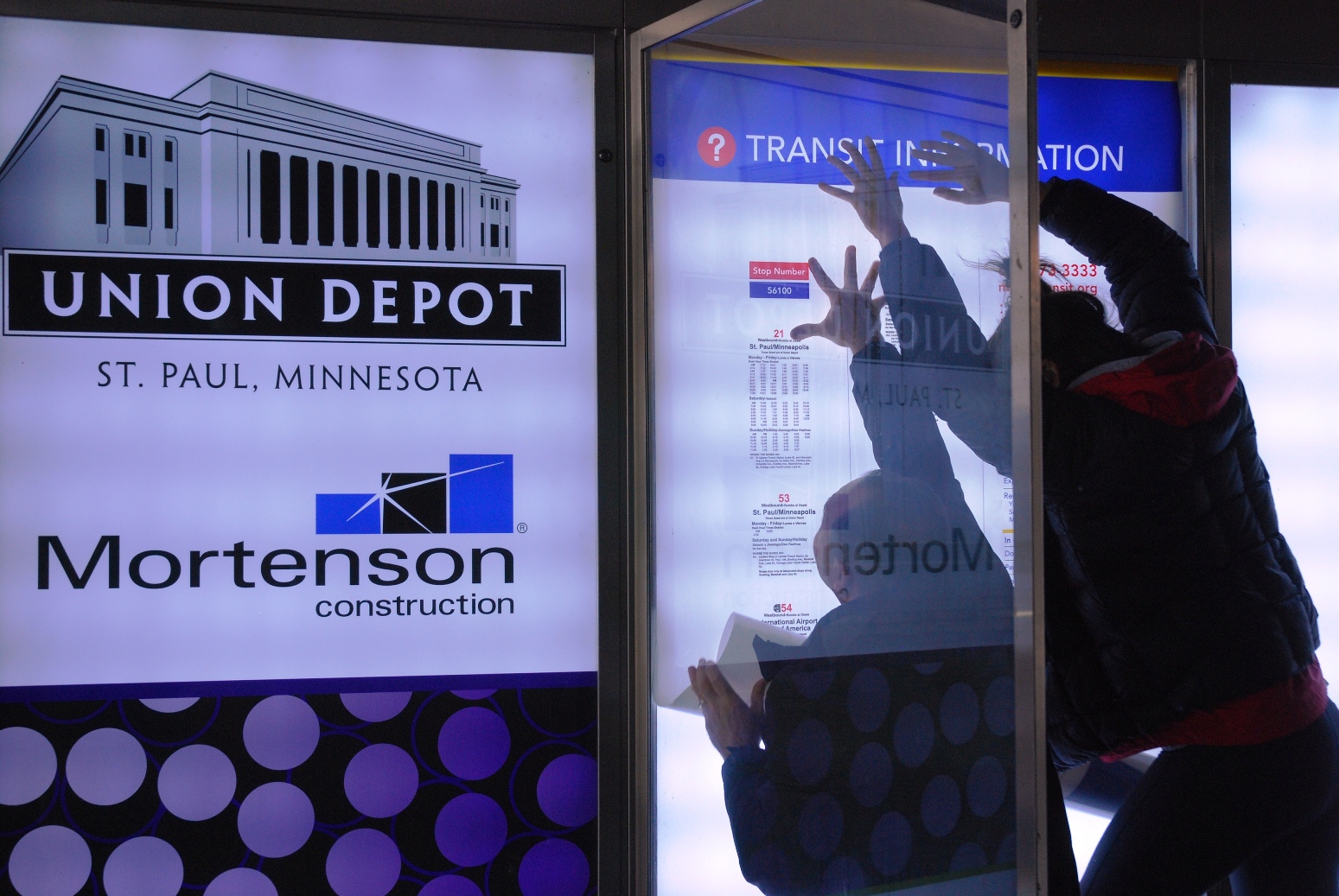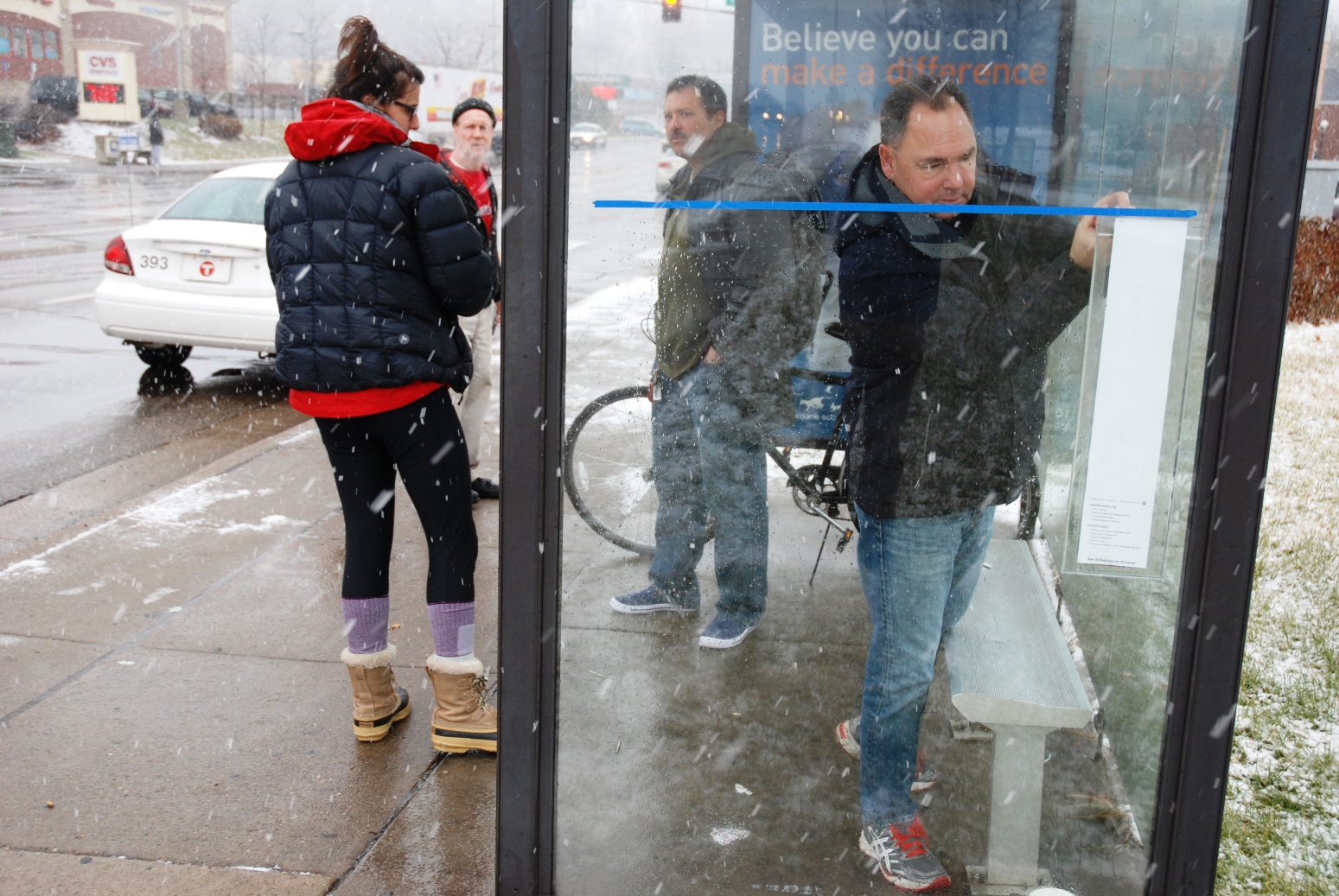 Scott Bergevin and Laura Matson have a lot of ground to cover.
Scott Bergevin and Laura Matson have a lot of ground to cover.
When service changes occur every three months, the pair is responsible for replacing or adding hundreds of new schedules at Metro Transit bus stops from Blaine to Lakeville, and Stillwater to Mound. In August, nearly 900 signs were added or replaced over the course of five days – the largest workload Bergevin recalls in his decade on the job.
“There’s a lot you have to get done in a week, which means you have to organize it really well,” he said.
With a fresh round of changes introduced to nearly 40 Metro Transit routes Dec. 7, Bergevin and Matson were back in the field this week visiting hundreds of bus stops, Transit Centers and Park & Rides in a rush to refresh schedule information at hundreds of locations. Scheduled and maps are changed at the last possible moment to avoid confusion among customers.
At the same time, nearly 503,000 new printed "pocket" schedules were being single-handedly distributed to libraries, grocery stores, recreation centers and other busy public facilities by Schedule Distribution Coordinator Wally Keifenheim. In 2012, more than 3 million such schedules were distributed at locations throughout Metro Transit’s service territory.
On Tuesday, with snow imminent, Bergevin and Matson found themselves racing the clock as well as the weather.
In the morning, the pair made stops at the Rosedale and Northtown transit centers before winding through the University of Minnesota's West Bank, Cedar-Riverside and along Central Avenue. Later, they traveled from the Union Depot south on Robert Street, then back north on Snelling Avenue. At the end of the day, they had surpassed 130 miles on the road.
After joining Metro Transit earlier this year, Matson said the time spent on the road has given her a new appreciation for the complexity of getting correct information out to the hundreds of locations Metro Transit serves.
“There are a lot of little details – a lot more than you’d think,” she said. “But we have a very methodical approach that makes it work.”
Matson and Bergevin travel together so one can act as the navigator, providing directions and updating information that will later be entered into a comprehensive database. Replacing large posters at transit centers like the Union Depot can also take an extra set of hands.
The largest project to come from this month's service changes involves the U of M campus, where buses are returning to Washington Avenue for the first time since 2011. The change is one of several being made in preparation for the METRO Green Line, which opens next year.
 Not every schedule or route adjustment has such a significant impact on service, but even slight variations require signs to be changed.
Not every schedule or route adjustment has such a significant impact on service, but even slight variations require signs to be changed.
Schedules and maps need to be replaced as service is modified to provide more reliable transfers and keep pace with ridership trends. Construction detours also play a role.
“All the route has to do is change by one minute and we’re out here,” Bergevin said.
Bergevin is spending more time in the field not just because of the changes that are made but because of the growth Metro Transit has experienced since he started ten years ago.
When Bergevin started, pocket schedules were simply displayed inside customer-waiting shelters. Today, Park & Rides, Transit Centers, Marq2 and some of the busiest stops have route maps. Stop numbers that can be used to get location-specific route and schedule information are also being introduced. (The numbers can be used with Metro Transit's mobile site or when speaking with representatives from the Transit Information Center).
Over the next few years, Metro Transit plans to continue rolling out new bus stop signs across the region while identifying other possibilities for providing additional transit information. A new survey invites customers to share thoughts about the value of having route numbers, a map of nearby landmarks or route destinations and other information at bus stops. The survey will be used as more information is tested in the field to determine impacts on ridership.
> A new sign of the times
> These routes will change on Dec. 7
> 2012 Facts